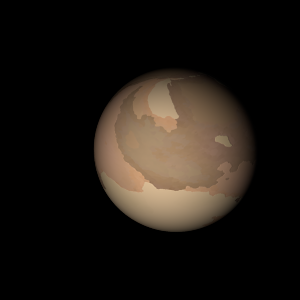|
|
Space Astro
|
Info for exoplanet "Kwanggyay"
| Scientific (actual) data |
|---|
| Name | Kepler-395 c |
| Planet status | Confirmed |
| Radius | 0.118 |
| Orbital period | 34.9893 |
| Semi major axis | 0.177 |
| Discovered | 2014 |
| Updated | 2021-02-05 |
| Tconj | 2454980 |
| Impact parameter | 0.4 |
| Publication | Announced on a website |
| Detection type | Primary Transit |
| Alternate names | 2MASS J19340266+4508117 c, K02650.01, KIC 8890150 c, KOI-2650 c, KOI-2650.01, WISE J193402.67+450811.8 c |
| Star name | Kepler-395 |
| Right ascension | 293.51° |
| Declination | 45.14° |
| Mag j | 13.818 |
| Mag h | 13.131 |
| Mag k | 12.948 |
| Star distance | 426.34 |
| Star metallicity | -0.163 |
| Star mass | 0.53 |
| Star radius | 0.56 |
| Star temperature | 4262 |
| Star alternate names | 2MASS J19340266+4508117, KIC 8890150, KOI-2650, WISE J193402.67+450811.8 |
| Wikipedia article | Kepler-395 c |
Back
| |
| Fictional info (?) |
|---|
| Suggested name | Kwanggyay |
| Planet type | Cold planet |
| The smooth Borealis basin in the northern hemisphere covers 18 percent of the planet and may be a giant impact feature. |
| Atmosphere | Water vapor | 96% |
| Oxygen | 3.8% |
| Methane | 0.015% |
| Atmospheric pressure | 17 bar |
 |
| No known satellites |
| Google search for Kwanggyay |
|
Website by Joachim Michaelis
|
|
|
|